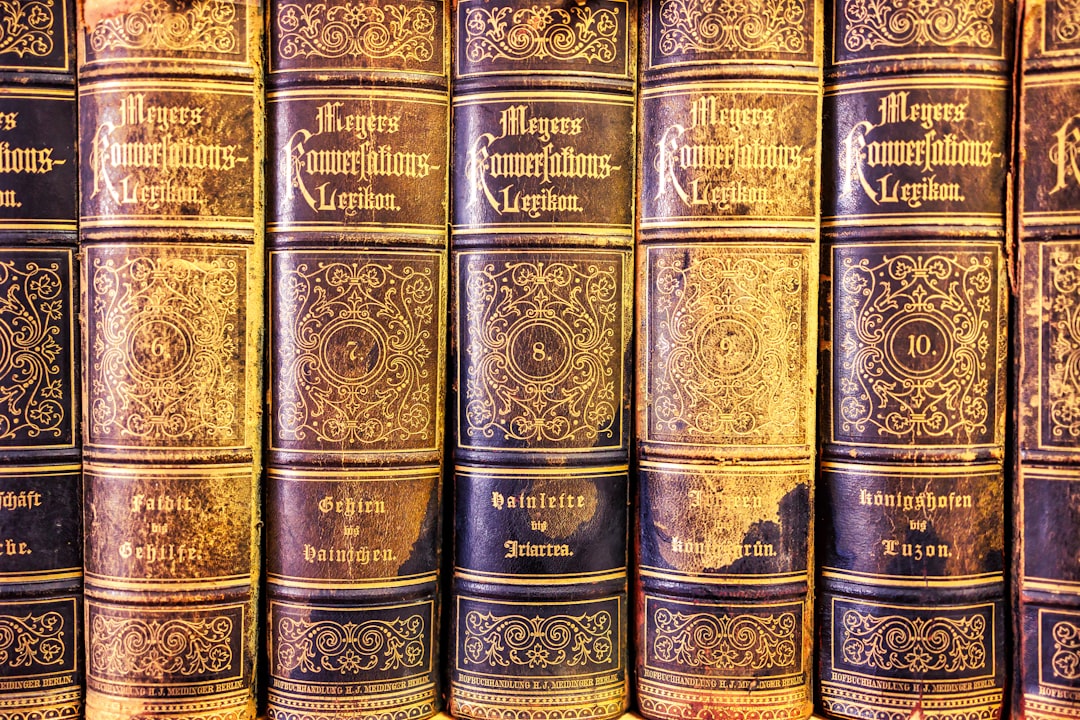William Langland and Geoffrey Chaucer were two of the most significant figures in English literature during the late 14th century, a period marked by social upheaval, the Black Death, and the beginnings of the English Renaissance. Langland, born around 1330, is best known for his allegorical poem “Piers Plowman,” which reflects the spiritual and social concerns of his time. His life was shaped by the tumultuous events of the 14th century, including the Peasants’ Revolt of 1381, which highlighted the growing discontent among the lower classes.
Langland’s experiences as a poor man navigating a society rife with inequality informed his writing, as he sought to address issues of justice, morality, and the human condition. Chaucer, on the other hand, was born around 1343 into a relatively affluent family, which afforded him opportunities that Langland did not have. His career spanned various roles, including that of a courtier, diplomat, and civil servant.
Chaucer’s exposure to the courtly life and the complexities of medieval society allowed him to craft narratives that were both entertaining and insightful. His most famous work, “The Canterbury Tales,” is a collection of stories told by a diverse group of pilgrims traveling to Canterbury Cathedral. This work not only showcases Chaucer’s mastery of character development but also serves as a social commentary on the various strata of medieval society.
The contrasting backgrounds of Langland and Chaucer significantly influenced their literary outputs. While Langland’s works are often characterized by a deep moral and spiritual quest, Chaucer’s narratives tend to embrace a more secular and humanistic approach. The two authors navigated their respective worlds with different lenses—Langland through a lens of social critique and Chaucer through one of observation and humor.
Their lives were intertwined with the cultural currents of their time, which shaped their perspectives and ultimately their contributions to English literature.
Key Takeaways
- Langland and Chaucer lived during the 14th century, a time of great social and political upheaval in England.
- Langland’s “Piers Plowman” and Chaucer’s “The Canterbury Tales” are two of the most famous works of Middle English literature.
- Langland and Chaucer’s works had a significant impact on the development of English literature, influencing later writers such as Shakespeare and Milton.
- Langland’s writing style is characterized by allegory and moral teachings, while Chaucer’s style is known for its realism and humor.
- The legacy of Langland and Chaucer can be seen in modern literature, with their works still being studied and adapted for contemporary audiences.
The Works of Langland and Chaucer
Langland’s “Piers Plowman” is an allegorical narrative that unfolds in a series of dream visions experienced by the narrator, Will. The poem is structured around the quest for Truth and explores themes such as social justice, the nature of sin, and the importance of faith. Written in alliterative verse, it reflects the linguistic transition from Old English to Middle English, showcasing a rich tapestry of dialects and styles.
The character of Piers represents Christ-like qualities and serves as a guide for Will on his spiritual journey. Through vivid imagery and complex allegory, Langland critiques the corruption within the Church and society at large, urging readers to seek genuine faith and moral integrity. Chaucer’s “The Canterbury Tales,” composed in the late 14th century, is a groundbreaking work that employs a frame narrative to bring together a diverse cast of characters.
Each pilgrim tells a story that reflects their social status, personality, and worldview. From the bawdy tales of the Miller to the pious narratives of the Parson, Chaucer captures the essence of medieval life with humor and insight. His use of iambic pentameter and rhymed couplets allows for a fluidity in storytelling that was innovative for its time.
Chaucer’s keen observations on human nature and societal norms resonate through his characters’ interactions and tales, making “The Canterbury Tales” not only a literary masterpiece but also a historical document that provides insight into 14th-century England. Both authors employed allegory but in markedly different ways. Langland’s work is heavily didactic, aiming to instruct readers on moral and spiritual matters through allegorical figures representing virtues and vices.
In contrast, Chaucer’s approach is more nuanced; while he does convey moral lessons through his tales, he often allows for ambiguity and complexity in human behavior. This difference in approach highlights their unique contributions to literature: Langland as a moral philosopher seeking truth in a chaotic world, and Chaucer as an astute observer of humanity who revels in its contradictions.
The Influence of Langland and Chaucer on Early Literature

The impact of Langland and Chaucer on early literature cannot be overstated. Langland’s “Piers Plowman” is often regarded as one of the first major works in Middle English literature that addresses social issues directly. His exploration of themes such as poverty, justice, and the quest for truth laid the groundwork for later writers who would grapple with similar concerns.
The poem’s innovative use of dream visions influenced subsequent allegorical works, including those by John Bunyan in “The Pilgrim’s Progress.” Langland’s emphasis on personal morality and social responsibility resonated with later reformers who sought to challenge institutional corruption within both church and state. Chaucer’s influence is equally profound; he is often referred to as the “father of English literature” due to his role in popularizing the use of vernacular English in literary works. Prior to Chaucer, much literature was composed in Latin or French, limiting accessibility for the average reader.
By writing in English, Chaucer opened doors for future generations of writers to express themselves in their native tongue. His character-driven narratives set a precedent for character development in literature, influencing authors such as William Shakespeare and John Milton. The rich tapestry of voices in “The Canterbury Tales” also inspired later writers to explore diverse perspectives within their own works.
Moreover, both authors contributed significantly to the evolution of poetic forms in English literature. Langland’s alliterative verse style paved the way for later poets who sought to experiment with rhythm and sound in their writing. Chaucer’s mastery of rhyme and meter established a standard for poetic composition that would endure for centuries.
Their works not only enriched the literary landscape of their time but also provided a foundation upon which future writers could build.
Comparing the Writing Styles of Langland and Chaucer
Langland’s writing style is characterized by its complexity and depth. His use of alliterative verse creates a rhythmic quality that enhances the allegorical nature of his work. The language is often dense with symbolism, requiring readers to engage deeply with the text to uncover its meanings.
For instance, in “Piers Plowman,” Langland employs a range of allegorical figures—such as Lady Holy Church and Lady Meed—to represent various aspects of society and morality. This intricate layering invites readers to reflect on their own lives in relation to broader social issues.
He employs a more straightforward narrative approach that allows readers to connect with his characters on a personal level. The use of iambic pentameter combined with rhymed couplets gives his poetry a musical quality that enhances its appeal. Chaucer’s keen ear for dialogue brings his characters to life; each tale is imbued with distinct voices that reflect their backgrounds and personalities.
This diversity not only showcases Chaucer’s skill as a storyteller but also serves to highlight the complexities of human nature. While both authors engage with moral themes, their methods differ significantly. Langland often adopts a serious tone, using allegory as a means to convey profound truths about faith and society.
His work demands introspection from readers as they navigate through layers of meaning. Conversely, Chaucer employs satire and wit to critique societal norms while simultaneously entertaining his audience. His tales often reveal human folly in a lighthearted manner, encouraging readers to laugh at their own shortcomings rather than dwell on moral failings.
The Legacy of Langland and Chaucer in Modern Literature
The legacies of Langland and Chaucer continue to resonate within modern literature, influencing countless writers across genres and styles. Their pioneering use of vernacular English has paved the way for contemporary authors who seek to express complex ideas through accessible language. Writers such as J.K. Rowling and Neil Gaiman draw upon this tradition by crafting narratives that engage readers from diverse backgrounds while exploring universal themes. Moreover, Langland’s focus on social justice remains relevant today as contemporary authors grapple with issues such as inequality, corruption, and moral responsibility.
Similarly, Chaucer’s exploration of human nature continues to inspire modern storytellers who delve into character-driven narratives that reflect contemporary dilemmas. In addition to thematic influences, both authors have left an indelible mark on narrative structure within literature. The frame narrative employed by Chaucer in “The Canterbury Tales” has been adapted by numerous writers seeking to weave together multiple perspectives within a single work. This technique can be seen in modern novels such as “Cloud Atlas” by David Mitchell or “The Brief Wondrous Life of Oscar Wao” by Junot Díaz, where interconnected stories create a rich tapestry that reflects broader societal themes.
Exploring the Historical and Cultural Context of Langland and Chaucer’s Works

To fully appreciate the works of Langland and Chaucer, it is essential to consider the historical and cultural context in which they were created. The late 14th century was marked by significant upheaval in England—socially, politically, and religiously. The aftermath of the Black Death had decimated populations, leading to labor shortages that empowered peasants to demand better wages and conditions.
This shift contributed to rising tensions between classes, which is poignantly reflected in Langland’s critique of societal injustices. Chaucer’s writings also emerge from this turbulent backdrop; his characters represent various facets of medieval society—from nobility to commoners—each grappling with their own challenges amid changing social dynamics. The Church held immense power during this period but was increasingly viewed with skepticism due to corruption scandals involving clergy members.
Both authors address these issues through their narratives—Langland through direct allegory aimed at reforming society’s moral compass, while Chaucer employs satire to expose hypocrisy within religious institutions. Furthermore, this era witnessed burgeoning interest in humanism—a movement that emphasized individual potential and critical thinking over blind adherence to tradition or authority figures. This cultural shift is evident in Chaucer’s nuanced portrayals of characters who embody both virtue and vice; he presents them as complex individuals rather than mere archetypes.
In contrast, Langland’s focus on allegorical figures reflects a more traditional approach rooted in medieval scholasticism. The interplay between these historical forces shaped not only their writings but also laid foundational stones for future literary movements—ushering in an era where literature became increasingly reflective of human experience rather than solely didactic or religious instruction. As such, understanding this context enriches our appreciation for Langland’s moral inquiries alongside Chaucer’s explorations into human nature—both serving as mirrors reflecting their time while continuing to resonate across centuries.
Langland and Chaucer are often regarded as pillars of early literature, with their works serving as foundational texts in the development of English literature. Their contributions to the literary canon have been studied and analyzed by scholars for centuries. For a deeper understanding of the analytical aspects of their writing, one may explore the article on Cauchy-Riemann equations and harmonic functions here. This article delves into the mathematical and structural elements of their works, shedding light on the complexities and nuances of their writing styles.






















+ There are no comments
Add yours